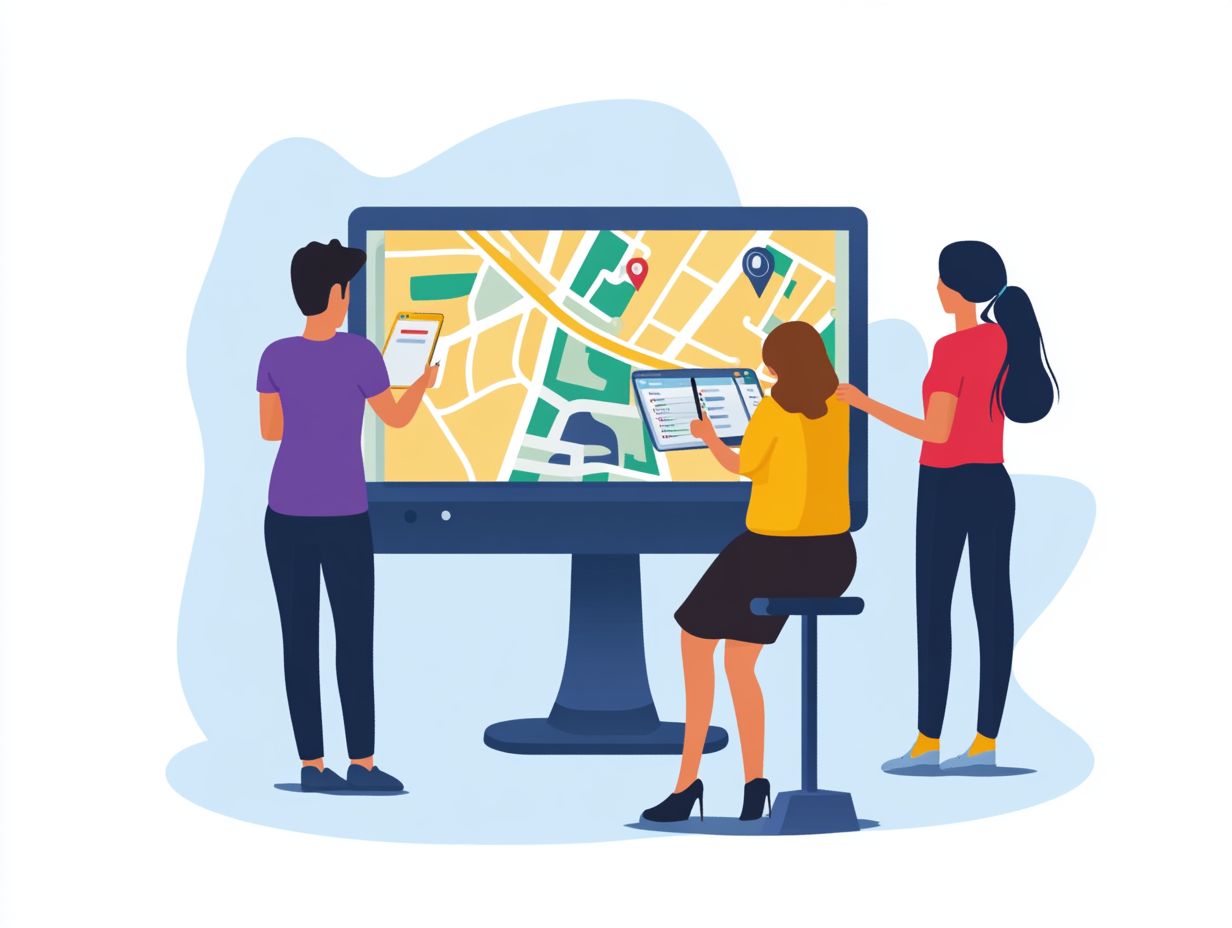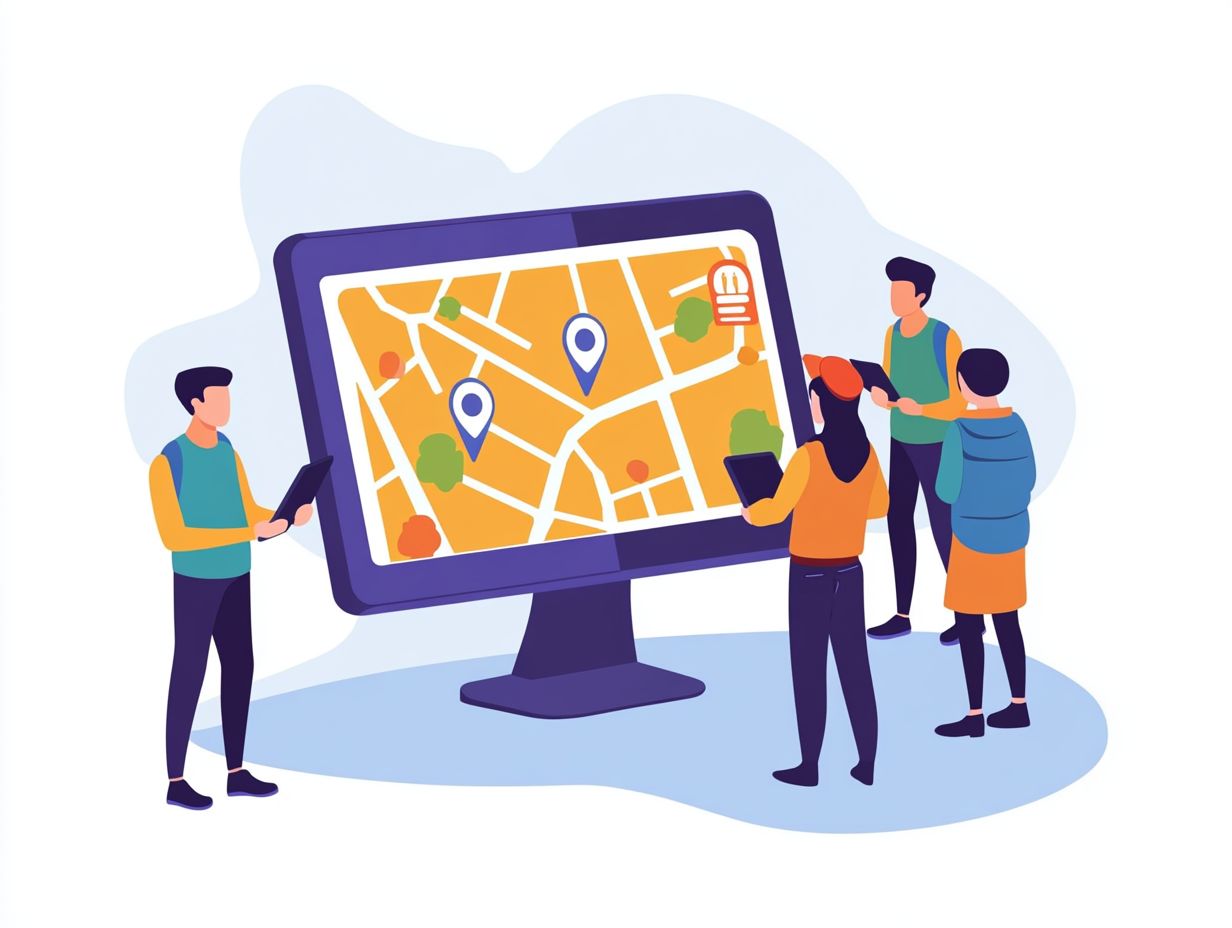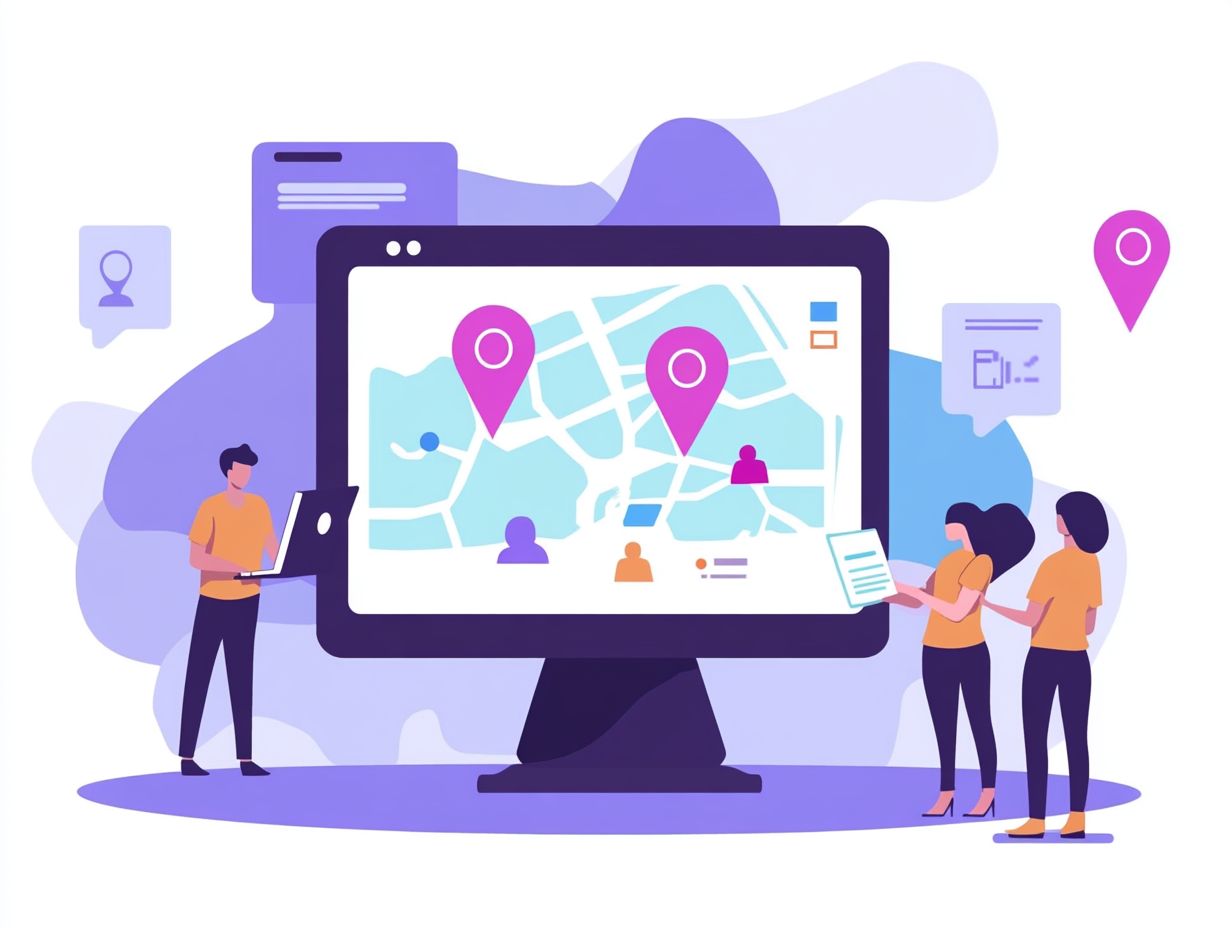In today’s competitive market, it’s crucial for businesses to understand location data if they want to enhance their marketing strategies and gain a competitive advantage. This article dives into what location data is, how it’s collected, and the significant role it plays in shaping consumer behavior and influencing purchase patterns. Readers will discover how leveraging this data can boost foot traffic, effectively target local consumers, and create personalized promotions. The discussion will also cover how to build customer loyalty through data analysis, along with best practices to ensure data privacy and security while maximizing marketing ROI. It’s all about uncovering the power of location data in marketing and enhancing customer satisfaction!
Understanding Location Data and its Importance in Marketing
Understanding location data is vital for businesses looking to boost their marketing strategies and engage with consumers more effectively. This type of data offers valuable insights into foot traffic patterns, customer demographics, and shopping habits, helping brands make informed decisions to drive customer retention and increase conversion rates.
By tapping into location intelligence, companies can enhance customer experiences, adapt to retail trends, and improve their omnichannel marketing strategies, keeping them competitive in the market. Plus, when they analyze traffic patterns, businesses can optimize their marketing campaigns more effectively and improve their marketing automation.
Using data analytics allows them to grasp consumer preferences and behaviors better, which ultimately leads to increased customer loyalty, higher sales conversions, and improved customer engagement through personalized marketing strategies.
What is Location Data and How is it Collected?
Location data refers to the information that pinpoints the geographic location of a device, typically collected through various methods like GPS, Wi-Fi, mobile applications, and mobile tracking. This data is gathered using location tracking technologies that record user movements and interactions in real-time, which can provide valuable insights for businesses and enhance their market segmentation efforts.
Understanding the different types of location data is crucial for companies looking to sharpen their marketing strategies and improve their cross-channel marketing efforts. For example, GPS data allows for precise tracking of where users are located, while Wi-Fi signals can help identify foot traffic patterns and visit frequency in specific areas.
Mobile applications also provide a way to gather location data, often with user consent, allowing businesses to tailor their interactions based on a consumer’s past locations and enhance their customer journey. By leveraging this assortment of data, organizations can effectively segment their audience according to geographical preferences and behaviors, leading to highly targeted campaigns that truly resonate with the specific needs and interests of different consumer groups, thereby enhancing engagement metrics.
The Role of Location Data in Consumer Behavior
Location data plays a crucial role in shaping consumer behavior and understanding shopping trends, influencing where and how people decide to shop. By understanding how location impacts customer decisions, businesses can tailor their marketing analytics to create campaigns that really resonate with their target audience.
Take a retail store in a bustling urban area, for example; it’s likely to see very different shopping habits and purchase intention compared to one in a quieter suburban zone. Consumers in metropolitan settings often prioritize convenience, making them more inclined to visit shops that offer quick access and shorter wait times.
Because of this, brands can amp up customer engagement by using geotargeted advertisements and location-based services that reach potential shoppers based on their geographical context. This strategy fosters brand loyalty and brand awareness by making interactions feel more personalized and context-aware.
Picture a diner that sends out mobile alerts with discounts to nearby customers—this could effectively drive foot traffic right through their doors and enhance their retail analytics. Such insights into consumer behavior not only sharpen marketing strategies but also boost sales conversion rates by ensuring that promotions align with the preferences and habits of shoppers in different locations, improving the overall in-store experience.
Using Location Data to Drive Foot Traffic

Using location data effectively can really amp up foot traffic for brick-and-mortar stores by boosting customer engagement with targeted marketing strategies and improving the in-store experience.
By tapping into proximity marketing and location-based advertising, businesses can whip up tailored promotional campaigns that resonate with local consumers and enhance brand engagement. This approach not only helps to increase sales but also enhances the overall in-store experience and improves customer satisfaction.
Targeting Local Consumers through Location-based Marketing
Targeting local consumers through location-based marketing is all about using technologies like geofencing and spatial analytics to send tailored messages and offers straight to potential customers’ mobile devices. This approach helps brands connect with their audience effectively and boosts the chances of getting people through their doors, thereby enhancing the customer journey.
By tapping into the power of audience segmentation and behavioral analysis, businesses can fine-tune their marketing strategies even more, making sure the right offers reach the right people at just the right time. Geofencing sets up virtual perimeters around specific locations, allowing brands to send notifications when users step into these zones, effectively improving marketing performance.
This kind of targeted approach not only makes promotions more relevant but also significantly increases the chances of driving in-store visits and improving the marketing funnel.
When local consumers feel valued through personalized engagement, they’re much more likely to develop a sense of brand loyalty, leading to repeat visits, increased store visits, and lasting relationships. The combo of geofencing and audience segmentation can really amp up local consumer engagement, boost digital marketing efforts, and strengthen a brand’s foothold in its community.
Creating Personalized Offers and Promotions based on Location Data
Creating personalized offers and promotions using location data can really boost customer engagement, satisfaction, and brand awareness. By analyzing consumer preferences and shopping habits, businesses can craft targeted marketing strategies that resonate with their audience, enhance transaction data analysis, and drive conversions.
For example, a local coffee shop might send out a discount offer to customers within a five-mile radius during their morning commute, which could effectively increase foot traffic and visit frequency when it matters most. Similarly, a clothing retailer could take advantage of geolocation and customer segmentation to alert shoppers about exclusive in-store discounts when they’re just a short walk away.
These tailored strategies not only encourage immediate purchases but also build loyalty and improve loyalty metrics, as customers start to feel understood and valued. Ultimately, using location data is a savvy way to connect digital marketing efforts with real-world consumer behavior and improve experiential marketing.
Building Customer Loyalty through Location Data

Building customer loyalty through location data is a smart move for businesses aiming to boost customer retention, improve customer touchpoints, and ensure long-term engagement.
By tapping into customer insights from location analytics, companies can craft loyalty programs that cater to the unique needs and preferences of their audience and enhance the overall user experience. This approach not only fosters brand loyalty and customer retention but also encourages repeat visits, making customers feel more connected to the brand.
Utilizing Location Data to Understand Customer Preferences and Behaviors
Utilizing location data to understand customer preferences and behaviors helps businesses tailor their offerings, enhance the overall customer experience, and drive traffic conversion. By diving into this data, companies can create customer profiles that guide product placements, marketing strategies, and market research, aligning them with what consumers actually want.
This approach not only ramps up engagement and improves data visualization but also drives up conversion rates. For example, a popular retail chain managed to use location analytics and footfall measurement to spot hotspot areas where foot traffic was high but sales were dragging. By strategically placing promotions and ads in those areas based on customer profiles, the company saw a significant boost in sales, customer loyalty, and promotion effectiveness.
In a similar vein, a leading fast-food brand took advantage of geo-targeting to roll out time-sensitive coupons, leading to a surge in store visits during peak hours. These case studies clearly show how leveraging location data for effective customer profiling and competitive analysis can really elevate a business’s marketing performance.
Implementing Location-based Loyalty Programs
Implementing location-based loyalty programs can really boost customer loyalty and retention strategies by offering rewards and incentives that are tailored to a customer’s geographic location, shopping habits, and consumer insights. This innovative approach can make promotions more effective, enhance competitive advantage, and strengthen brand positioning in a competitive market.
By leveraging the power of geo-targeting and spatial analytics, businesses can create personalized experiences that resonate more deeply with their customers. When rewards align with local interests and preferences, customers are much more likely to engage with promotions, leading to higher satisfaction levels and improved customer feedback.
These initiatives can also foster a sense of community among patrons, encouraging repeat visits, enhancing the retail strategies, and building brand loyalty. As customers feel valued and recognized in their local environment, they’re more likely to advocate for the brand, turning into loyal ambassadors who not only keep coming back but also spread the word about the business to others in their area, improving the marketing funnel.
Best Practices for Incorporating Location Data into Marketing Strategies

Incorporating location data into marketing strategies takes a bit of thought to make sure businesses are using consumer information effectively and ethically. They need to strike a balance between reaping the rewards of data analytics, ensuring data collection practices are secure, and respecting data privacy and security.
It’s all about creating marketing performance metrics that build customer trust, enhance business intelligence, while still boosting engagement and improving the marketing funnel.
Ensuring Data Privacy and Security in Location-based Marketing
For businesses using location data in their marketing strategies, ensuring data privacy and security is crucial. This approach helps build consumer trust and confidence. Companies need to establish clear practices and implement strong security measures to protect customer information while staying compliant with regulatory standards. Additionally, understanding consumer behavior through data analytics and mobile tracking can significantly enhance marketing efforts.
To safeguard consumer data, businesses should start by:
- Conducting regular audits of their data collection practices.
- Implementing encryption methods for sensitive information.
- Obtaining explicit consent from users before collecting their location data.
Being transparent about how that data will be used can significantly boost consumer trust.
Providing consumers with options to manage their preferences or opt-out entirely can create a more positive engagement experience. By prioritizing these measures, businesses not only comply with regulations but also foster an atmosphere where consumers feel valued. This approach ultimately enhances brand loyalty and customer retention, encouraging repeat interactions and customer loyalty.
Measuring and Analyzing the Effectiveness of Location-based Marketing and Consumer Insights
Measuring and analyzing the effectiveness of location-based marketing is crucial for businesses to understand how it impacts customer engagement and marketing ROI. By using strong analytics tools, they can track key performance indicators, such as conversion rates and traffic analysis, and tweak their strategies to get the most out of their campaigns.
In terms of metrics, foot traffic, customer conversion rates, and return on investment really stand out as essential indicators. Businesses should also pay attention to engagement metrics like app interactions and social media shares, as these reflect customers’ interests in specific locations. Understanding visit frequency and purchase patterns can also provide valuable insights into consumer preferences and shopping trends.
Data visualization is key here; it helps marketers make sense of all that information, allowing them to spot patterns and anomalies quickly. Utilizing spatial analytics and location intelligence can further enhance their ability to optimize marketing strategies.
By fostering a culture of continuous improvement, businesses can refine their strategies based on real-time data, ultimately leading to better customer experiences and enhanced marketing outcomes overall. Implementing loyalty programs and context-aware marketing can further boost brand engagement and customer satisfaction.







